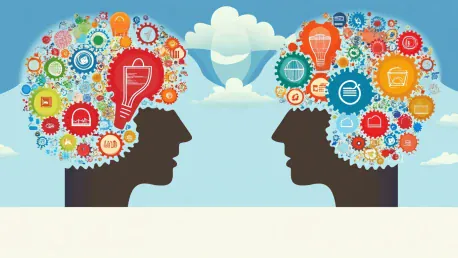Natural Language Processing (NLP), a branch of artificial intelligence, has dramatically transformed how we interact with technology. NLP bridges the gap between human communication and machine understanding, enabling computers to interpret, understand, and generate human language. From ubiquitous voice assistants to sophisticated automated translation tools, NLP technology is pivotal in reshaping our daily interactions with machines. This article delves into the major advancements in NLP, tracing its evolution, examining its current state, and spotlighting its diverse applications across various industries.
The Evolution of NLP
Early computers faced significant challenges in processing human language due to its inherent ambiguity and contextual nuances. Initial attempts in the 1950s and 60s involved rule-based approaches that encoded explicit grammatical rules for language processing. These early models, despite their innovative spirit, struggled to accurately translate and understand the complexities of human languages, often resulting in significant inaccuracies and misunderstandings.
The evolution of NLP took a significant turn in the 1980s and 90s with the introduction of statistical models. By analyzing extensive text corpora, researchers began recognizing patterns and relationships within language, thus improving the accuracy of NLP systems. However, the rise of machine learning and deep learning in the 2000s and 2010s marked a pivotal shift. These technologies allowed computers to mimic human-like language comprehension more effectively, setting the stage for modern NLP systems. The synergy of computational power and innovative algorithms propelled NLP into a new realm of capabilities, rendering it far more efficient and effective.
Benefits and Core Capabilities
Modern NLP systems combine computational linguistics with machine learning and deep learning techniques, vastly enhancing their capabilities. These sophisticated systems excel at understanding and generating human language, leading to advancements in technologies such as voice assistants, autocomplete features, and predictive text functions. Core capabilities of NLP include speech recognition and transcription, enabling accurate voice-to-text conversion; semantic comprehension, allowing systems to understand the meaning of words and sentences; and sentiment analysis, which discerns the emotional tone of content.
Language translation and the generation of human-like text and responses are also pivotal elements of NLP’s core capabilities. These facets have become integral to numerous everyday applications, transforming and enriching our interaction with technology in various domains. For instance, voice assistants like Siri and Alexa leverage NLP to provide a seamless user experience by understanding and responding to voice commands. Autocomplete features in texting applications and predictive text functions in keyboards have made communication quicker and more efficient. These innovations demonstrate the expansive and diverse applications of NLP, solidifying its fundamental role in modern technology.
Key Processes in NLP
NLP operates through several meticulous processes that enable its functionality and effectiveness. Tokenization is one such process, segmenting text into individual words or phrases, making it easier to analyze and understand. Part-of-speech tagging identifies grammatical components, such as nouns, verbs, and adjectives, providing structural insight into sentences. Another vital process is Named Entity Recognition (NER), which isolates proper nouns like names, places, and dates, adding context and specificity.
Sentiment analysis is another core process, assessing the emotional tone within text, crucial for applications like social media monitoring and customer service. Syntax and semantic analysis delve into sentence structure and meaning, ensuring accurate comprehension and interpretation of language. These processes are fundamental to the effectiveness of NLP applications, ensuring that language is processed and interpreted accurately. Through these methodologies, NLP models have become adept at understanding context, recognizing patterns, and delivering contextually appropriate responses, making human-computer interactions more natural and coherent.
Practical Applications
The practical applications of NLP extend across various fields, revolutionizing how businesses and individuals operate. Search engines like Google leverage NLP to enhance their contextual understanding of user queries, providing more accurate and relevant search results. Voice assistants employ NLP for accurate voice command recognition, facilitating seamless communication between users and devices. Chatbots, present on business websites and mobile banking apps, use NLP to improve customer service interactions by providing instant, relevant responses to user inquiries.
Language translation services, a staple of NLP applications, enable seamless communication across different languages, breaking down linguistic barriers. AI-powered content generation tools assist in creating professional and creative writing, streamlining the content creation process. In the healthcare sector, NLP automates clinical documentation and aids in diagnosing diseases from medical notes, improving efficiency and accuracy. Additionally, the legal field benefits from NLP through streamlined document reviews and compliance checks, reducing the burden of manual analysis and enhancing productivity.
Ongoing Challenges
Despite significant advancements, NLP still faces notable challenges. One significant hurdle is understanding context, particularly with sarcasm, idiomatic expressions, and humor, which can be difficult for AI to interpret accurately. Biases in language models are another critical issue; these models often inherit prejudices present in their training datasets, leading to biased outputs. Support for multiple languages also varies, with some languages having less robust NLP capabilities than others.
Ethical concerns arise with the potential for misinformation and manipulation through AI-generated text, posing risks to information integrity. The relentless pursuit of more intelligent and context-aware models continues, with innovations in neurosymbolic AI—which combines logical reasoning with deep learning—and multi-modal AI—which integrates text, speech, and visual data—promising even more robust language processing systems. These advancements aim to address current hurdles and further refine NLP’s capabilities, driving continued progress in the field.
The Future Outlook
Natural Language Processing (NLP), a fascinating subdivision of artificial intelligence, has revolutionized the way we interact with technology today. Acting as a bridge between human language and computer comprehension, NLP empowers machines to interpret, process, and generate human language. The impact of NLP is profound, ranging from ubiquitous voice assistants like Siri and Alexa to advanced automated translation services such as Google Translate. These technologies have become integral to our daily lives. This article explores the significant milestones in the evolution of NLP, providing a thorough analysis of its current capabilities and shedding light on its varied applications across different sectors. Industries ranging from healthcare to finance have been transformed by NLP, demonstrating its adaptability and far-reaching potential. In essence, NLP is continually reshaping how humans and machines communicate, driving forward both technology and its practical applications in diverse areas.









